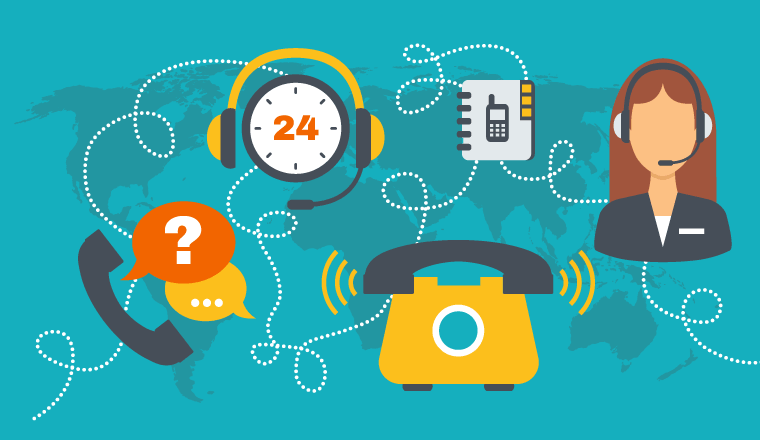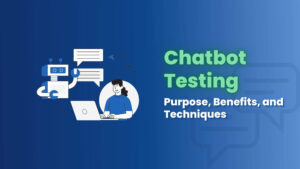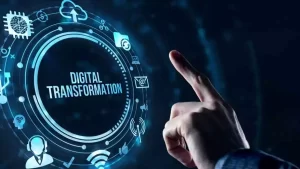The concept of call centers first emerged in the 1960s when businesses started installing business phone systems or private branch exchanges (PBXs) and began hiring customer service representatives to handle the rising volumes of phone calls.
The term was first coined by Data Communications, a reputable communications trade publication, and it was recognized and published by the Oxford English Dictionary in 1983. Shortly thereafter, call centers became the epitome of the fastest customer service.
As communication technology evolved in leaps and bounds in the late 90s and early 2000s, the monopoly held by telephone systems on customer service started weaning off. Customers started using a wide range of communication channels to reach businesses.
As per a recent stat, the average customer now uses at least ten different channels to communicate with businesses. Another study found that more than two-thirds of customer service professionals said that they are receiving more customer queries and requests from other digital channels.
The term “call center” was no longer applicable to those businesses that started leveraging a wide range of communication channels to provide customer service. Instead, the term “contact center” became more suitable for those. The term was coined by a British journalist in the early 1980s.
Although the terms “call centers” and “contact centers” are often used interchangeably, they are different from each other in many ways. This blog post discusses the difference between a call center and a contact center in great detail. Read on to know if you want a call center or a contact center.
What is a call center?
As the name suggests, a call center is a facility that provides customer service only through the phone system. Before the invention of the telephone, customer service meant face-to-face conversations with customers or receiving letters from and replying to them. But the advent of the telephone in 1876 revolutionized the way businesses provided customer service.
Even to this date, many organizations use their phone systems exclusively to provide customer service. They employ a team of dedicated customer service representatives whose only job is to handle telephone calls exclusively over that medium and no other communication channel. That’s because they use call centers to maximize productivity and allow their agents to focus on one call at a time.
In these facilities, call center agents use inbound call center software and outbound call center software to handle all inbound and outbound phone calls respectively.
In inbound call centers, they receive incoming calls from customers. The calls could be customer support calls, tech support calls, queries, requests, and more. These call centers focus on agent productivity and quick resolution times. In outbound call centers, agents make outgoing calls to customers. The calls could be marketing offers, fundraising requests, sales calls, surveys, debt collection, or more.
What is a contact center?
The term “contact center” first appeared in the early 1980s in a magazine named Computer Weekly. It refers to a facility or a customer service hub that uses multiple channels such as audio calls, video calls, emails, text messages, instant messages, live chats, and social media to provide customer service.
In contact centers, customer service representatives leverage omnichannel contact center software to handle customer conversations coming from a wide range of channels.
Key differences between call centers and contact centers
When it comes to key differences between a call center and a contact center, there are many more factors than just the fact that the former exclusively uses a telephone system while the latter uses a wide range of communication tools. Let’s take a look at the key aspects in which they differ from each other.
1. Communication channels
The most basic difference between a call center and a contact center is the channels they use to interact with customers. The former uses a phone system only for communication. To streamline the calls, the call center can use either inbound call center software or outbound call center software.
But in the case of a contact center, the communication channels are widely diverse. In addition to phones, contact centers leverage digital channels such as live chat, social media, or emails to communicate with customers.
2. Usage
In call centers, the usage is limited to technical support, telemarketing, and sales. Call centers are suitable for industries where a majority of customers prefer the phone. Some of the industries that prefer using call centers are manufacturing, telecom, real estate, banking and financial services sector, and non-profit, just to name a few.
In a contact center, the usage is more likely for omnichannel customer service and customer relationship management. Customers contacting a contact center can get replies across a wide range of platforms.
Businesses that intend to provide a comprehensive experience to their customers leverage contact centers. Industries that need to use a wide range of channels to communicate with their customers benefit from using contact center software. Some of the industries are hospitality, travel, education, healthcare, and more.
3. Queue management
As all customer communication happens through a phone system in a call center, inbound call center software is equipped with automatic call distributors and skill-based routing that routes inbound calls to the right customer service representatives.
Contact centers use omnichannel queue management to route inbound customer queries across all channels. Contact centers also use automated tools to route tickets to the right agents.
4. Scaling up customer service during peak times
When it comes to scaling up customer service, it’s easier and far more cost-effective for a contact center than a call center. That’s because the latter are heavily manpower dependent. Agents are responsible for interacting with customers, providing technical support, and handling customer queries and complaints.
As phone calls happen in real-time, handling calls requires huge efforts from agents and it takes up their entire bandwidth. To optimize workflow management, call centers need to engage more agents during peak hours. Some businesses even outsource their calls and hire seasonal or part-time agents to handle the extra workload during peak seasons. All these increase costs.
In a contact center, however, customer service representatives are adept at using two or more channels at the same time. The agents that aren’t speaking with customers over the phone can handle email conversations, social media chat, and instant messages in parallel.
A majority of companies use well-crafted templates to respond to customer queries and requests. This allows them to deliver faster customer service without compromising the customer experience. By doing so, contact centers can provide effective customer service at scale during peak times without hiring more agents or outsourcing their work.
5. Support type
The support type of a contact center is both proactive and reactive, whereas it’s only reactive in the case of a call center. To understand the statement, let’s take the example of renowned brands that offer proactive customer support and service. Now, the question comes “how do they do it?”
Also read:- Gemstone Jewelry Online to Strengthen
As contact centers operate in the digital domain, they have an advantage when it comes to leveraging customer data to map customers’ journeys and provide tailored solutions. Contact center agents can track the entire customer journey as well as view the bounce rate, dead clicks or rage clicks, and other indicators as to whether a customer is satisfied or dissatisfied with the company. That’ll enable them to provide the right service to the customer.
In the case of a call center, however, managers and agents can’t provide proactive service as they can’t leverage key data and insights to know what customers want. The data most call centers get is limited to the average handling time, on-hold time, call completion rate, and others. These data can provide insights into a call center’s performance and agents’ productivity but won’t help in providing proactive support.
6. Self-service management
From chatbots to self-service portals to community forums, contact centers offer a wide range of self-service management services. They also provide the option of embedding a chatbot in a self-service portal. If they can’t find an answer to any question, they can use the chatbot to raise a ticket. If the chatbot isn’t able to resolve the issue, then an agent can follow up with the customer and provide a suitable solution to their problem.
Also read:- write for us tech
Also read:- Technology write for us
Also read:- write for us technology blogs
In the case of call centers, the only self-service option is an interactive voice response (IVR) system. It’s time-consuming and it’s not often easy to get in touch with a call center representative after using the IVR.
7. Integrations
Contact center software can be integrated with customer relationship management (CRM) software, which can provide a well-rounded view of customers. Feedback forms can also be attached at the end of every conversation to know if the agents delivered desired customer experience. Contact center software can be integrated with a marketing automation platform, team collaboration software, SMS, and more.
But call center software can’t show the entire picture of the customer journey or tell about the customer experience a company delivers. They cannot be integrated with many automation platforms and they provide limited functionalities compared to contact center software.
Summing up,
The term “call centers” became popular after a lot of businesses started using their telephone systems to interact with their customers, answer their queries, and resolve their problems. However, the advent of more sophisticated digital technologies resulted in the emergence of a new term–contact center.
A contact center is a more advanced version of a call center where agents can communicate with customers using a wide range of communication tools including phone calls, text messages, emails, web chats, and social media.
Author bio:
Hello, I am a professional SEO Expert & Write for us Technology blog and submit a guest posts on different platforms- we provides a good opportunity for content writers to submit guest posts on our website. We frequently highlight and tend to showcase guests.



